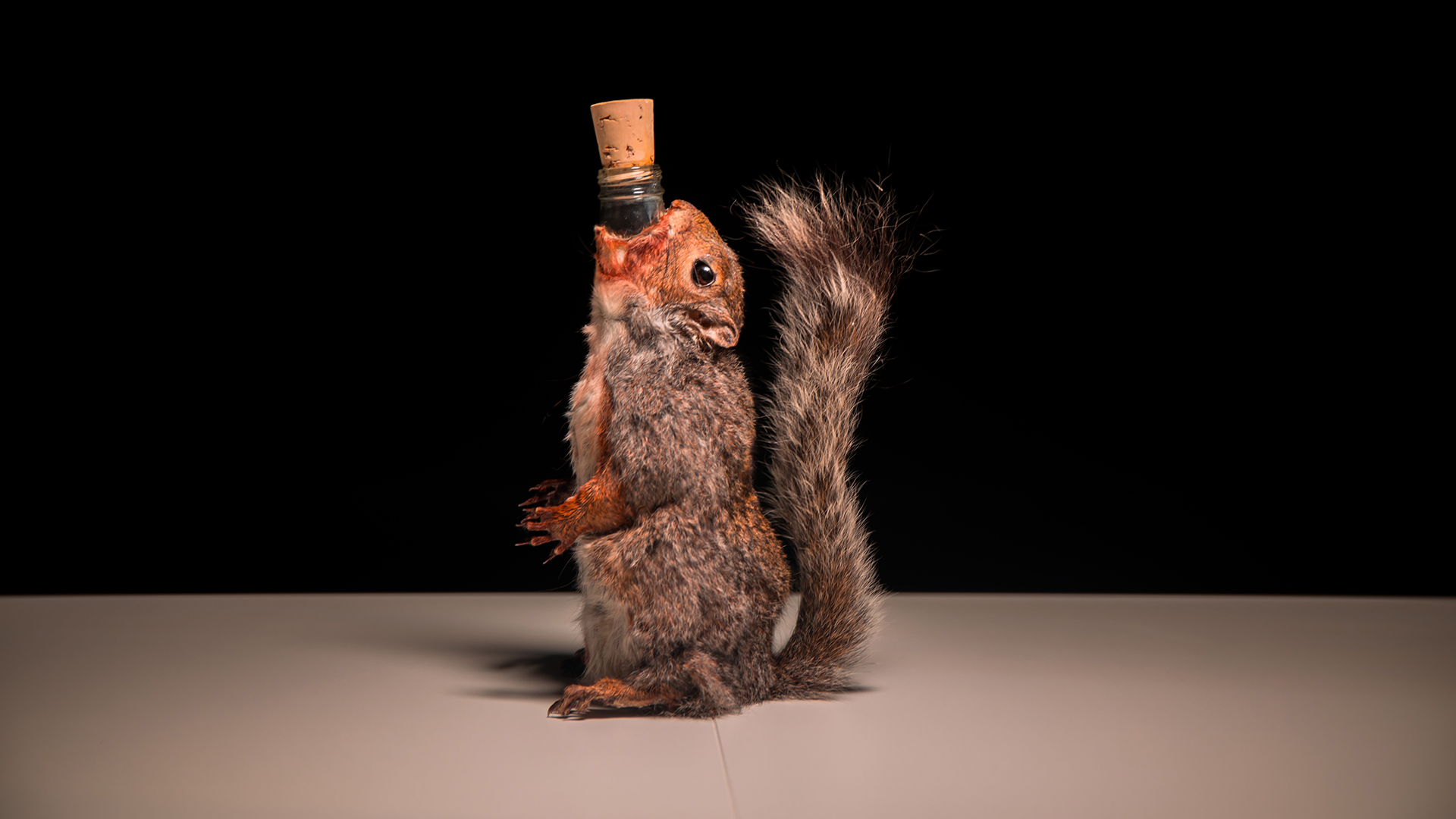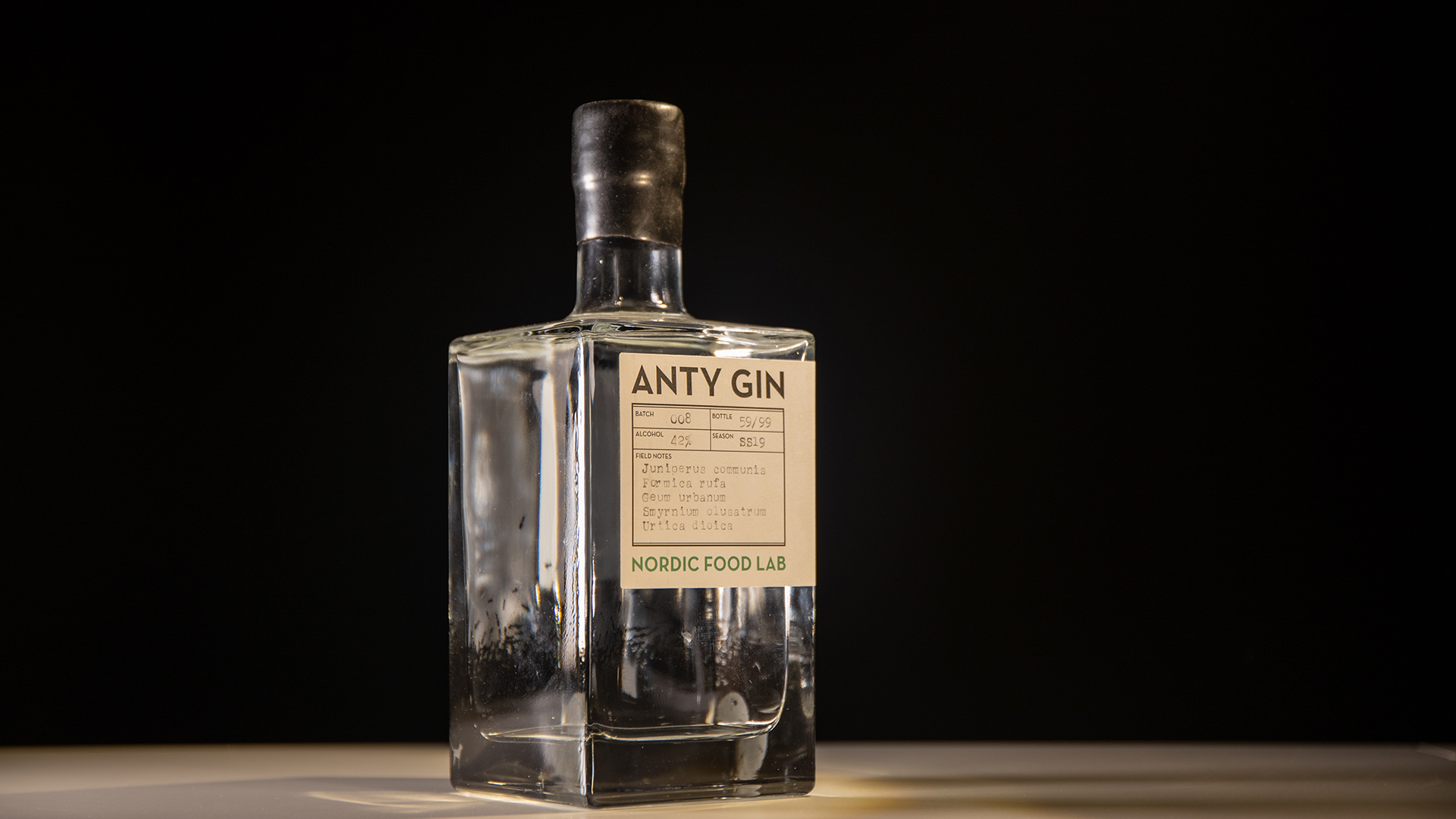Squirrel beer, ant gin and poop wine are served up in Disgusting Food Museum's new exhibit
Bottoms up (and good luck keeping it down).
Gin brewed with ants. Poop wine. Whale testicle beer flavored with the smoked dung of Icelandic sheep. This beverage collection sounds like a menu at the world's worst Happy Hour, but it's actually part of a new exhibit at the aptly named Disgusting Food Museum in Malmö, Sweden.
The museum is already known for its peculiar culinary displays, such as maggoty cheese from Sardinia, Icelandic fermented shark flesh and Peruvian frog smoothies. For the new three-month-long exhibit, which opened to the public on Sept. 5, "we have found the strangest, most interesting and challenging alcohol types from the world," museum director Andreas Ahrens said in a statement. "Some of the exhibited alcohols showcase different types of homemade alcohols going back thousands of years, while others are experimental, made by local brewers," he said.
One highlight is a Scottish beer that is the strongest beer in the world, with a staggering 55% alcohol by volume, or ABV (on average, beer is usually about 4.5% ABV). But the high alcohol content isn't the weirdest aspect of this Scottish beer — the intoxicating brew is served inside a taxidermy squirrel.
Related: 15 of the world's most 'disgusting' foods (photos)
"I have long been fascinated by why we humans force ourselves to overcome our dislike for 'acquired taste' alcohols" — drinks that can be intensely bitter, pungent or otherwise unpleasant, Ahrens told Live Science in an email. "This exhibit is a deep dive into why we drink and how we started our strange relationship with spirits."
Disgust has long been considered a universal human emotion. But while the emotion may be universal, opinions vary widely about what qualifies as "disgusting," depending on customs, cultures and personal tastes, the museum website says. "What is delicious to one person can be revolting to another. Disgusting Food Museum invites visitors to explore the world of food and challenge their notions of what is and what isn't edible," according to the website.

Alcohol in the museum exhibit had to be considered drinkable somewhere in the world, even if some would be put off by an offensive taste, odor "or the background of how it's made," Ahrens told Live Science. For example, a rice wine called Ttongsul, once used as a medicinal remedy in South Korea, is brewed with fermented human feces. "The thought alone is enough to get most people to gag," Ahrens said. Unsurprisingly, this so-called poop wine "smells horribly bad during production," he added.
Sign up for the Live Science daily newsletter now
Get the world’s most fascinating discoveries delivered straight to your inbox.
Whale testicle beer, a seasonal product produced by Brewery Steðji in Iceland, incorporates testicles "that are cured according to an old, Icelandic tradition, lightly salted and then smoked," brewery co-owner Dagbjartur Arilíusson told Icelandic news site Vísir in 2015. "We put a lot of effort into this and it's a long process," he said.
And Anty Gin — each bottle steeped with about 62 red wood ants (Formica rufa), is the world's first gin brewed with insects, according to manufacturer Cambridge Distillery. The ants lend "sharp citrus notes" to the beverage, the product website says.

It's probably just as well that visitors can only look at the exhibit's alcoholic beverages, and not taste them. However, Ahrens did sample "as many as possible" while researching the drinks; he tasted "almost all of the rest" by the time the exhibit opened, Ahrens told Live Science.
In fact, four of the alcoholic beverages on display were manufactured by the museum: Korean feces wine; chicha, an ancient beer made from corn that is chewed into paste before fermenting; pruno, a prison wine made from fruit and brewed in a toilet; and a potent Ugandan moonshine that British colonizers dubbed "war gin."
"The only one I can't bring myself to trying is the poo wine," Ahrens admitted. "It's just messing with my head."
Originally published on Live Science.

Mindy Weisberger is an editor at Scholastic and a former Live Science channel editor and senior writer. She has reported on general science, covering climate change, paleontology, biology and space. Mindy studied film at Columbia University; prior to Live Science she produced, wrote and directed media for the American Museum of Natural History in New York City. Her videos about dinosaurs, astrophysics, biodiversity and evolution appear in museums and science centers worldwide, earning awards such as the CINE Golden Eagle and the Communicator Award of Excellence. Her writing has also appeared in Scientific American, The Washington Post and How It Works Magazine. Her book "Rise of the Zombie Bugs: The Surprising Science of Parasitic Mind Control" will be published in spring 2025 by Johns Hopkins University Press.









